| Corcoran Technical Trading Patterns For February 27 |
| By Clive Corcoran |
Published
02/27/2009
|
Stocks
|
Unrated
|
|
|
|
Corcoran Technical Trading Patterns For February 27
The patterns highlighted on the chart below for the S&P 500 Cash index (SPX) reveal that the market is resolving its internal conflicts, when it does so, to the downside and I expect this pattern to continue.
The GDP number today could be a market mover and I would still expect erratic intraday jockeying for positions to keep the near-term direction unclear, but I am now feeling more confident that we will be seeing a 6 as the first digit in the index value in the intermediate term.
For what it's worth, my own most recent musings on market mayhem are that Tim Geithner is now walking a tightrope and, should there be any missteps, he will be walking the plank.
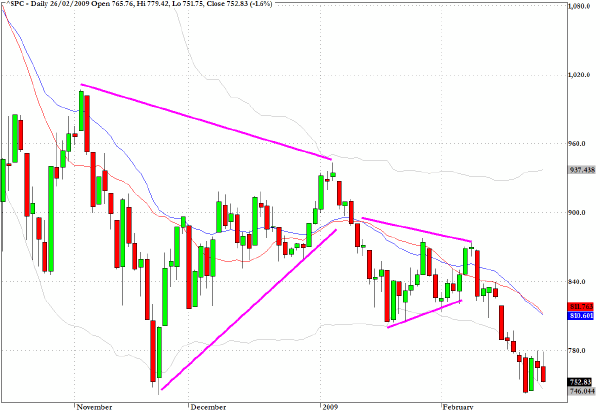
The UK government is trailblazing with a sweetheart deal to ring fence those much celebrated "toxic assets". Why is this relevant to the US Banking index (BKX)? I have been commenting for some time that - much as it is counter-intuitive - the banks may finally be putting in a sustainable bottom.
That's the good news; the bad news is that they may have stopped going down - and they have gone down on an epic scale - and even though they may enjoy some nice quick bounces, the ground they now have to try to recover is staggering.
And this is in a financial environment which could take many years, to put it optimistically, to see anything like the supportive conditions and growth potential that resembles those seen in the earlier years of this decade.
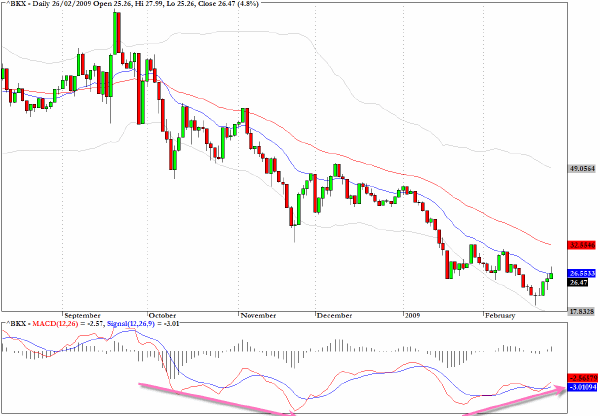
While I am no longer outright bearish on the banking sector, I am becoming more concerned that the risk transference that has been heralded by the Asset Protection Scheme (or should that be Scam) announced in the UK yesterday and which may have some echoes in the moves being made for Citigroup (C)are negative for all issuers of Treasury paper.
Gilts in particular need to be watched for signs of a buyer's strike and although the US government has even bigger fish to fry, the US Treasury market has the benefit that it is underpinned by the global reserve currency.
Not that I am seriously proposing this, but the nightmare meltdown scenario that just could evolve is a surging dollar, an even more bullish market in gold and other strategic commodities, and an outright buyer's strike which affects the most indebted nations first and eventually hits US Treasuries.
'
That is a conceivable risk that must now be contemplated and not just dismissed as scare-mongering. Thinking the unthinkable has proven to be a better conceptual strategy over the last year than thinking that smart financial engineers had successfully provided a safety net under capital markets by distributing risk through structured products and securitizations.
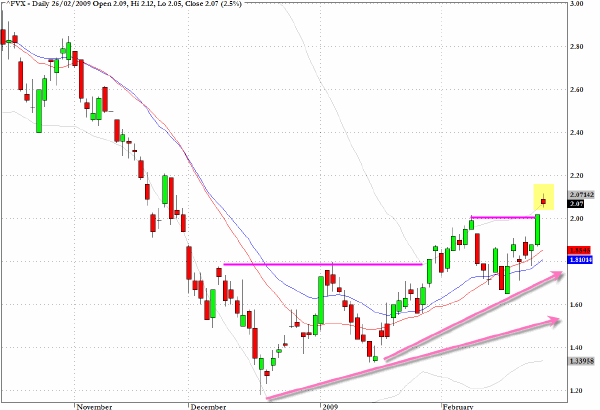
The high yield corporate bond market is struggling as I intimated earlier this week. Another perspective on this sector and one which is tradable via an ETF is the chart for JNK, which is based on a Lehman High Yield Bond index.
Movements in this sector could be a precursor to the next leg down in equities.
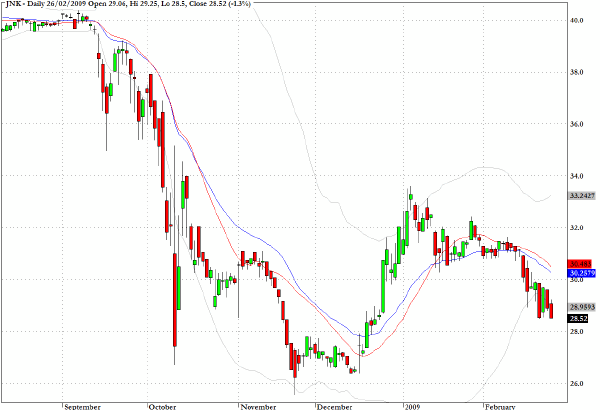
UUP, which allows a bullish trade on the US dollar against a collection of major currencies, is in a clear buy channel. While resistance is to be expected at the top of the channel indicated, there is a good chance that global investors are becoming increasingly convinced that the US dollar is the world's worst currency - apart from all of the rest.
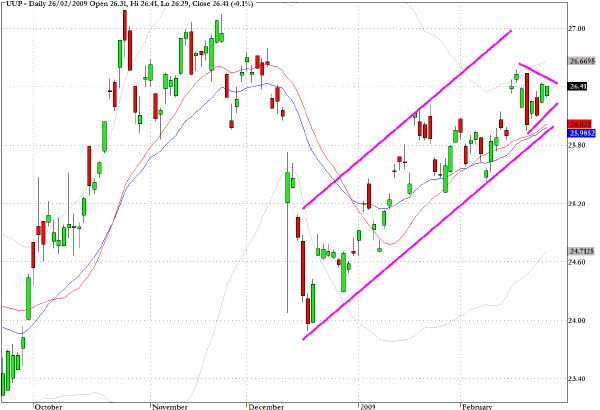
Clive Corcoran is the publisher of TradeWithForm.com, which provides daily analysis and commentary on the US stock market. He specializes in market neutral investing and and is currently working on a book about the benefits of trading with long/short strategies, which is scheduled for publication later this year.
Disclaimer
The purpose of this article is to offer you the chance to review the trading methodology, risk reduction strategies and portfolio construction techniques described at tradewithform.com. There is no guarantee that the trading strategies advocated will be profitable. Moreover, there is a risk that following these strategies will lead to loss of capital. Past results are no guarantee of future results. Trading stocks and CFD's can yield large rewards, but also has large potential risks. Trading with leverage can be especially risky. You should be fully aware of the risks of trading in the capital markets. You are strongly advised not to trade with capital.
|